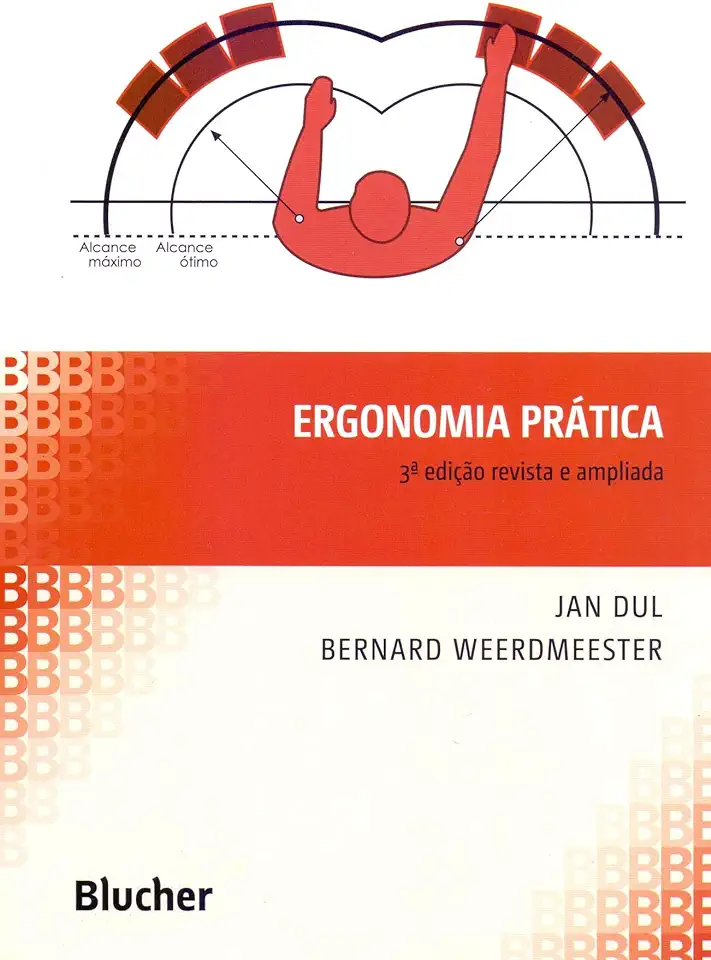
Practical Ergonomics - Jan Dul/ Bernard Weerdmeester
Practical Ergonomics: A Comprehensive Guide to Designing Workplaces for Optimal Efficiency and Comfort
Introduction
In today's fast-paced and competitive business environment, organizations are constantly seeking ways to improve productivity, efficiency, and employee well-being. One crucial aspect that often gets overlooked is the importance of ergonomics in the workplace. Practical Ergonomics, authored by Jan Dul and Bernard Weerdmeester, serves as an invaluable resource for businesses and individuals alike, providing a comprehensive guide to designing workplaces that prioritize both efficiency and comfort.
Understanding Ergonomics
Ergonomics, also known as human factors engineering, is the science of designing workplaces, products, and systems that match the capabilities and limitations of the human body. By incorporating ergonomic principles, organizations can create environments that reduce the risk of work-related injuries, enhance productivity, and promote overall employee well-being.
Key Features of Practical Ergonomics
Practical Ergonomics offers a wealth of knowledge and practical insights into the field of ergonomics. Some of the key features of this book include:
Comprehensive Coverage: The book covers a wide range of topics, from basic ergonomic principles to advanced concepts and applications. It provides a holistic understanding of ergonomics, encompassing physical, cognitive, and organizational aspects.
Real-World Examples: Practical Ergonomics is filled with real-world examples, case studies, and illustrations that help readers grasp the concepts and apply them to their specific work environments. These examples demonstrate the practical value of ergonomics and its impact on various industries.
Step-by-Step Guidance: The book provides a step-by-step approach to conducting ergonomic assessments, identifying hazards, and implementing ergonomic interventions. It offers practical tools and techniques that can be easily applied in any workplace setting.
Evidence-Based Approach: Practical Ergonomics is grounded in scientific research and evidence-based practices. It presents the latest findings and best practices in the field, ensuring that readers have access to the most up-to-date information.
Benefits of Practical Ergonomics
Implementing ergonomic principles in the workplace can bring numerous benefits, including:
Reduced Work-Related Injuries: By addressing ergonomic risk factors, organizations can significantly reduce the incidence of work-related injuries and musculoskeletal disorders, leading to improved employee health and safety.
Enhanced Productivity: Ergonomically designed workplaces can enhance productivity by reducing fatigue, discomfort, and stress. Employees can work more efficiently and effectively when their workstations are tailored to their physical needs.
Improved Employee Well-being: Ergonomic interventions contribute to overall employee well-being by promoting physical comfort, mental health, and job satisfaction. Happy and healthy employees are more engaged and productive, leading to a positive work environment.
Increased Organizational Efficiency: By optimizing the workplace environment, organizations can streamline processes, reduce costs associated with absenteeism and presenteeism, and improve overall operational efficiency.
Conclusion
Practical Ergonomics is an essential resource for anyone interested in creating workplaces that prioritize both efficiency and comfort. Its comprehensive coverage, real-world examples, step-by-step guidance, and evidence-based approach make it an invaluable tool for businesses, ergonomists, and individuals seeking to improve their work environments. By investing in ergonomics, organizations can reap the benefits of reduced injuries, enhanced productivity, improved employee well-being, and increased organizational efficiency.